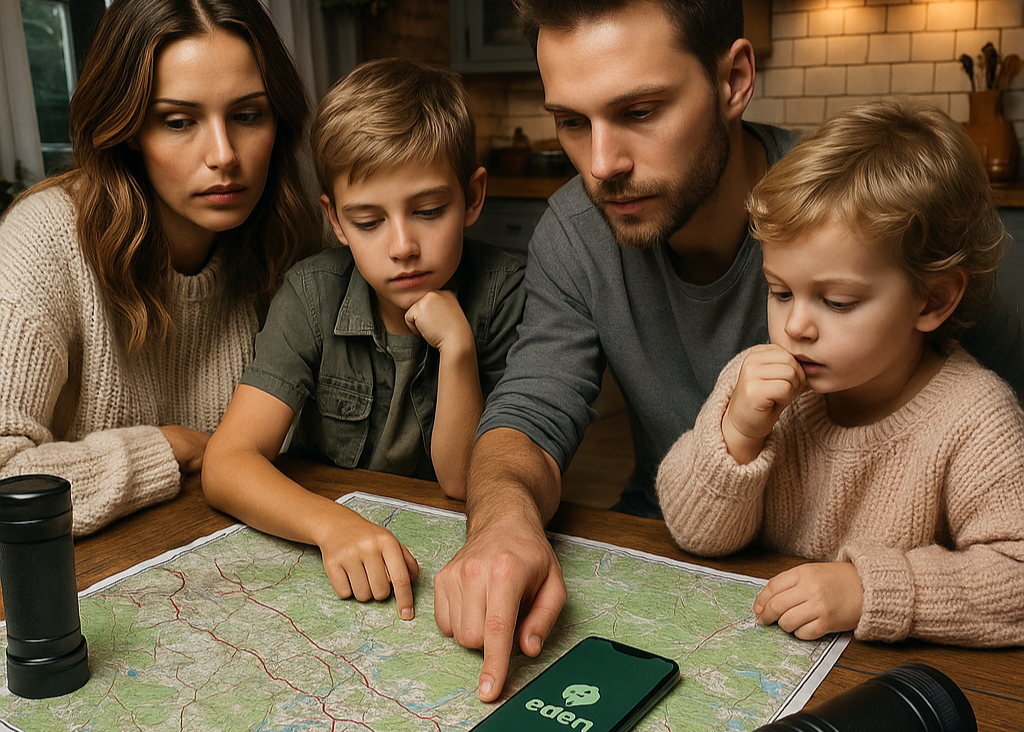
🧑👩👧👦 Evaluate Your Family’s Emergency Needs
Preparedness isn’t one-size-fits-all. It starts with knowing what each person needs to stay safe, healthy, and calm—no matter the disaster.
💡Why Personalization Matters
A basic go-bag or emergency kit is a good start—but it may not be enough for families with kids, elderly members, medical conditions, or pets.
🧭 Start Here: Know Your Local Risks First
Before you tailor your emergency plan, take a moment to visit our Know Your Risks guide and identify the specific disasters most likely in your region (floods, wildfires, snowstorms, etc.).
This will help you determine how long you might be without power, clean water, or emergency services.
👶 Infants & Toddlers
- Diapers (minimum 3–5 day supply)
- Wipes & diaper rash cream
- Infant formula or breastmilk storage bags
- Bottles & sterilization tablets or wipes
- Pacifiers, small toys, comfort blanket
- Baby-safe water, soft spoons or food packs
- Infant pain reliever / fever reducer (e.g., acetaminophen)
- Extra clothing, bibs, socks, hat
- Baby carrier or stroller (lightweight foldable if evacuating)
👴 Elderly & Medically Fragile Adults
- 7–14 day supply of prescription medication
- Pill organizer or labeled bag with dosage instructions
- Mobility aids: cane, walker, hearing aid batteries, glasses
- Denture supplies or hygiene items
- Medical alert bracelet
- Emergency contact & care instructions card
- Spare incontinence supplies (if applicable)
- Manual backup for medical equipment (O2 tanks, insulin, CPAP, etc.)
- Written list of medications, doctors, allergies, and insurance
🧒 Kids & Teens
- Extra clothes, underwear, shoes
- Flashlight or headlamp with child-safe switch
- Reusable water bottle
- Snacks (granola bars, fruit cups, crackers)
- Games, coloring books, mini puzzles
- Headphones or earplugs (for loud shelters)
- Comfort item (stuffed animal, blanket, or pillow)
- Backup glasses or retainers
- Copy of ID or family contact info card in pocket or bag
🐶 Pets (Dogs, Cats, or Small Animals)
- 3–5 days of food in waterproof container
- Collapsible bowls
- Leash, carrier, harness
- Pet medications or supplements
- ID tags (microchip recommended)
- Poop bags, litter box & litter
- Copy of vaccine and ownership records
- Towel, blanket, or crate mat for comfort
- Treats or toys to reduce anxiety
🧍 General Adult Needs (for Every Household Member)
- At least 1 gallon of water per person per day
- Non-perishable food (3–7 day supply)
- Toothbrush, toothpaste, deodorant, soap
- Menstrual hygiene products
- Toilet paper, tissues, hand sanitizer
- N95 mask or multi-layer cloth mask
- Multi-tool or basic knife
- Flashlight + extra batteries
- Cash in small bills ($100–$300 recommended)
- Copy of ID, health card, and insurance
- Waterproof / fire-resistant pouch for documents
- Phone charger, power bank, or solar panel
- Work gloves, basic tools, duct tape
- Waterproof lighter or matches
🗃️ Emergency Documents (Store Together in One Safe Bag)
- Copies of birth certificates, licenses, passports
- Medical records or care plans
- Insurance policies (home, auto, life)
- Mortgage or lease documents
- Emergency contact list (printed and digital)
- Maps with evacuation routes marked
- Photos of family members and pets (for ID or missing reports)
- USB drive with digital backups (encrypted if possible)
🎯 Special Situations to Consider
- Do you live with someone with sensory sensitivities or neurodivergence?
→ Include noise-canceling headphones, stim toys, weighted blanket, or visual communication cards. - Do you rely on dialysis, oxygen, insulin, or refrigeration-dependent meds?
→ Contact your doctor now for emergency plans and portable alternatives. - Does your area regularly face evacuation orders or shelter-in-place events?
→ Prepare a stay-at-home bin AND a go-bag by the door.
✅ Pro Tips From Emergency Professionals
- Label every bag or item by person and purpose
- Rotate food, water, and medicine every 6–12 months
- Practice a “5-minute grab drill” with your family—can you collect your critical items fast?
- Don’t forget pet food, formula, or comfort items. Panic is less likely when your essentials are already packed.
🧠 Final Word
Preparedness is personal.
No two families are the same—and no two disasters affect people the same way. Taking 30 minutes to evaluate your family’s needs today could make all the difference tomorrow.
